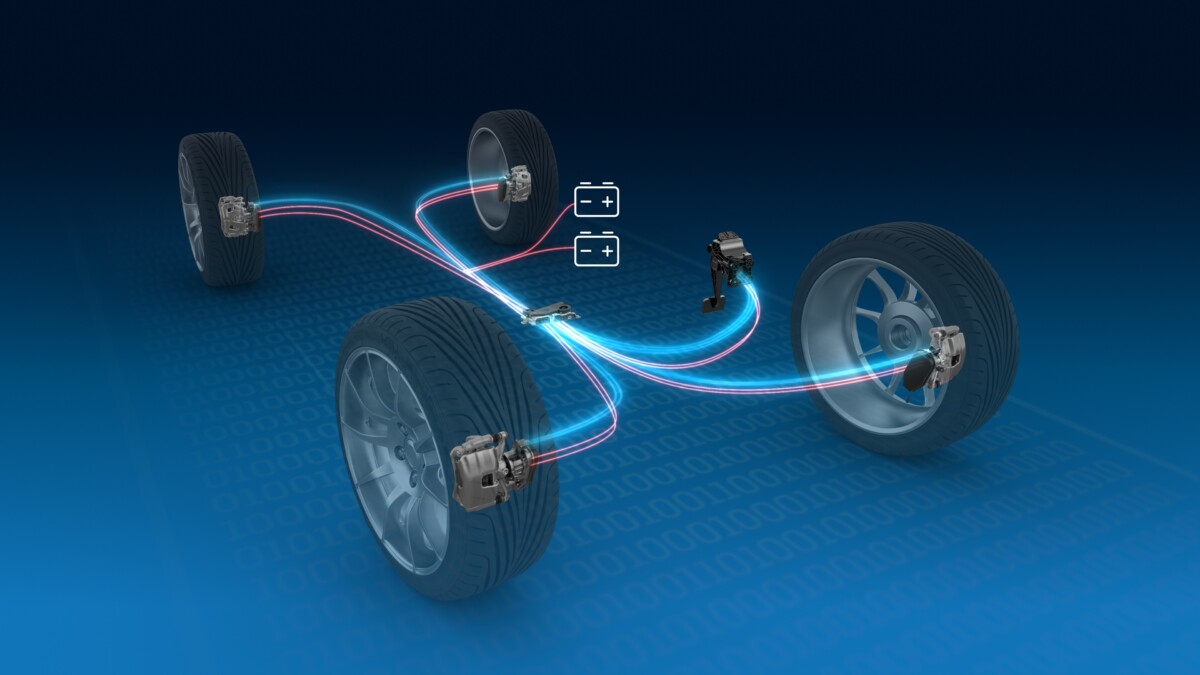The equipment manufacturer ZF has just presented its electric braking system which banishes any hydraulic system and plans, thanks to small motors housed in each wheel, to recover up to 17% more autonomy for electric cars.
If some cars rely on solar charging to increase their autonomy, such as the Fisker Ocean which can integrate photovoltaic panels in its roof, for the moment the best way to try to shave a few kilometers from an electric car is regenerative braking. But it is difficult to gauge how much the actual quantity of energy recovered amounts to. And unless you’re going down a mountain, on a daily basis, it’s probably not much.
However, this could change thanks to a new braking system developed by the German equipment manufacturer ZF, which we know in particular for its gearboxes on thermal cars, and which promises to increase the autonomy of electric cars which will be equipped. Introducing “Dry Brake-by-wire” braking.
No more mechanical connection
Unlike all current cars (except many Chinese electric cars like the Smart #1 which already has a similar system, or certain racing cars), the new ZF system no longer relies on hydraulics, but on electric. Understand by this that there is no more brake fluid, that this is “dry” braking. In reality, the braking pressure is no longer generated by fluid pressure in the hydraulic system, but by electric motors. And there is one housed in each wheel.

Please note, however, that the two types of brakes should not be pitted against each other, as they can be complementary by being combined. If some manufacturers will choose to stay with all hydraulics, others will choose all electric, and still others may opt for hydraulics at the front and electric at the rear for example.
Better autonomy…
The advantages as presented by ZF for its electric braking system are multiple. Starting with a shorter braking distance. The equipment manufacturer specifies that during automatic emergency braking, the braking distance could be reduced by nine meters at a speed of 100 km/h, compared to a conventional braking system. It is enormous.
Another advantage is that of energy recovery. Here again ZF puts forward a precise figure, that of 17%. It corresponds to the gain in autonomy that could be achieved thanks to this braking system. So on a car offering 600 kilometers of autonomy, we can imagine that the “by-wire” braking system would save it 100 kilometers (102 to be precise).
But be careful, this could be true in certain very specific conditions, and particularly in town, with a lot of braking. On expressways, there is no point hoping for any gain in autonomy.

… less pollution
In addition, ZF also tells us of decreasing particle pollution. Because thanks to its system, the minimum contact between the brake pads and discs can be reduced to “almost zero” and therefore in addition to saving energy, this also helps reduce particles due to abrasion of the brake discs. brakes. Which, as a reminder, will be taken into account in the new Euro 7 standards (threshold set at 7 mg/km, then 3 mg/km from 2035).
Finally, the last advantage put forward, and not the least, that of cost. Because due to a reduced number of parts, assembly and logistics costs are lower. That’s for the car manufacturer. And for the customer it also means a reduction in expenses because there will no longer be brake fluid to change regularly.
It now remains to be seen when exactly ZF intends to equip its system and which will be the first models to be equipped with it! We see in the photo on the front page that it is an electric BYD Han.
No wonder, when you know that BYD has developed its own by-wire (hydraulic) braking system. This maintains hydraulic operation, but the link between the brake pedal and the brakes is made electronically and not by a mechanical cable.
